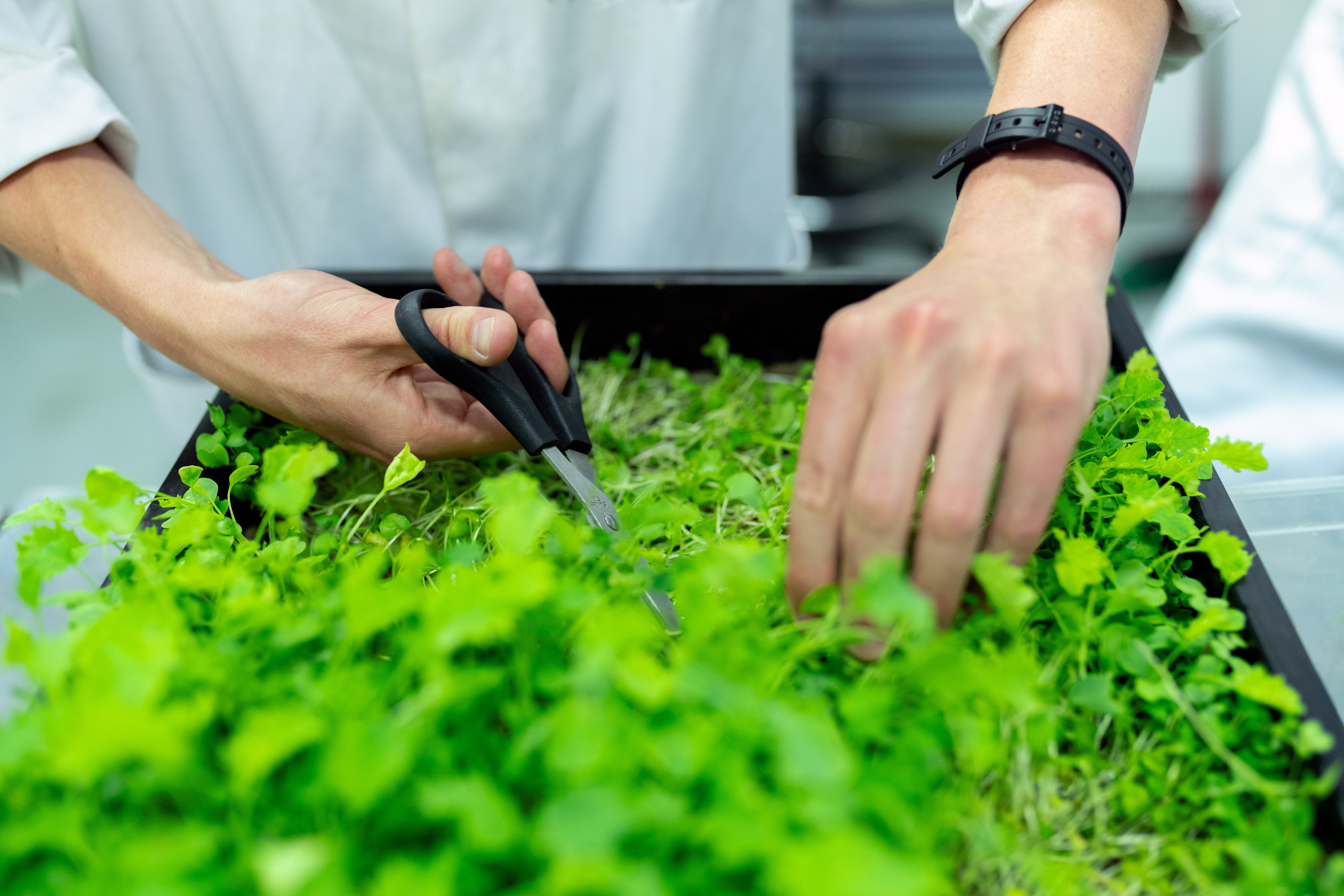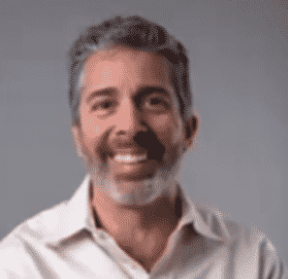
SEED-TO-SALE SUSTAINABILITY IN CANNABIS- CANNA CON DENVER
“In this exclusive Canna Con information packed seminar discussion on sustainability in cannabis, industry experts from cultivation, packaging, and extraction will analyze what environmental challenges the industry faces today from seed to sale and most importantly what businesses can do to reduce their environmental impact while maintaining profitability. This seminar features all local Colorado company industry professionals but covers a national perspective within their individual areas of expertise. Speakers include Matt Broxterman of Boulder Creek Technologies, Ron Basak-Smith of Sana Packaging, and Jake Mitchell of Resource Innovations, along with moderator Rocco Iannapollo of Cannabis Kitchen Supplies.” The following responses are a culmination of comments from all panelists.
Speakers Bio’s
What are various sustainability programs/rebates cannabis companies can find in the industry that many may not be aware of?
From an energy and water perspective, Xcel Energy provides a fair amount of rebates. They are 100% free and look at the energy and equipment usage of cultivation companies to become more efficient. We help cultivators fill out the rebate application and throughout the whole process. There are many operational incentives from simple things such as switching lights from 48 to 24 hours usage, turning off grow lights when cleaning, and more.
Xcel Energy recognizing cannabis as a legitimate industry is fantastic. They will give rebates for any project in any industry called ‘custom rebates’ not just specifically for cultivation. Making changes that don’t impact yield of the product but simply make the business more efficient is the goal. There are tons of programs available out there, specifically though utilities, as well as direct customer programs. Each program utilizes sustainability assessments, there are services out there and available you just need to find them.
It is estimated that 1% of the United States national electricity goes to indoor cannabis cultivation. Figuring out peak demand and knowing how to reduce that is one of the best ways cultivators can decrease cost as well as acting with sustainable practices. Generally energy companies charge at the rate of the peak 15 minutes of use. Essentially anything you can save energy on there’s a rebate for.
Why is packaging and sustainability so difficult in cannabis?
Especially in cannabis there are so many different product types (concentrate, flower, edibles, etc.). Making it incredibly difficult to have standards for packaging. Looking at it as an Upstream- what goes into making the packaging (energy, water, material, etc.) vs. Downstream- the customers interaction with packaging and how its disposed of. It’s incredibly difficult to connect up and down stream to make a truly sustainable product. Trade offs can be made, such as low impact down stream can mean high impact up stream and vice versa. When looking at the LCA (Life cycle analysis) of packaging the trade offs and understanding what environmental impact your company is making is huge and should be discussed with your customer. Focusing on overall impact and not one specific section of packaging life cycle is essential.
Packaging is also so complex because no one is footing the bill. No one is having to deal with used materials on a municipal level. So proper disposal/facilities aren’t a standard and ones that are working toward proper disposal don’t have support through government programs. Waste management is a private industry that doesn’t take into account environmental impact because there are no incentives to. Take recycling, the debate between giving up or support recycling has been ongoing for years. Denver has kick back programs that are self funded, however, there’s no set system in place nationally. Everything can be seen on a local or city level but nothing across that board that is aiming to encourage sustainable waste management.
How can cultivation work to become as sustainable as possible?
Make sure to start with a sustainability assessment. This will help you understand where your cultivation process has the biggest areas of impact. Focusing on the granular level including energy use, water waste, air, supply chain, resource usage, SOPs, etc. Everything from evaluating equipment (where the energy usage is going) to which areas of the facility are using certain resources, going even so far as to the water being used in the employees bathroom. Looking at the company holistically in terms of how does everything work together and being sustainable in a practicable way.
For example if you were to change up your irrigation system to hand watering to save energy usage from overhead sprinklers this could at first seem to be a real benefit. However, having employees hand water means they could over water, leading to high evaporation, meaning your dehumidifier is working harder, having your AC kick on, etc. sparking a chain reaction of systematic effects that can end up doing more harm both financially and environmentally.
Equipment- Solvent vs. Solventless Extraction, which is better?
The extraction side of this industry jumped into solvents because that was what was used in other industries. Going into solvent extraction made sense when first starting out but there are downfalls. While solvent based is a ‘closed loop system’ where material is washed, extracted from, and then recovered, there are losses along the way. A great deal of chilling is happening as well, which is a huge energy cost. Recently there has been a big push towards solventless extraction. Not only for health and safety concerns involving solvents containing heavy metal residuals, but inefficient product outputs. Extraction requires a huge amount of energy regardless of the type of extraction. However vapor static extraction is possible at a larger scale that still maintains efficiencies resulting in less waste and saving in energy use.
An LCA for extraction equipment hoping to improve sustainability can be a great approach. Many extractors want to run their systems as fast as possible without thinking about how this impacts the energy use. Extractors tend to go for max possible settings on equipment when its unnecessary. Make sure to size equipment properly for your business size. When evaluating how to be more sustainable, be more deliberate throughout the process and use of equipment. You can fine tune the use of HVAC, turn up and down times and reduce cycle times can always help and ensure other equipment systems aren’t fighting against each other. If possible, you can look to cool office area overnight when electric power is cheaper.
Q. Why is it so difficult to find sustainable packaging?
A. The variety of products out there means there’s no standardization. Depending on each state’s legalization and regulation guidelines the packaging requirements change. For example, buying flower in Colorado and Oregon is deli-style packaging. You walk up to a counter, place an order from glass jars, and then take your own product home. Other states might require everything to be prepackaged. Which can be stored for longer, but also can impact shelf life. Other issues such as opacity- ability to see through packaging- can impact your products packaging decisions. Since the consumer doesn’t see or interact with product, you would want to put more cost into graphics and printing. While high opacity can allow for light degeneration of the product.
With state by state norms, regulations, and needs (environmental), uniformity is impossible. Not to mention trade-offs concerning sustainability. Glass and metal are energy intensive but recycle better after use. Communicating to customers exactly why you chose your packaging and the sustainability impacts are important, especially as you move forward if selling nationally. Keep in mind that most consumers associate high end packaging with high end product as is with many other products in many different industries. it is important to understand what your consumer expects for each product line.
The Recycling Debate
Regarding recycling of packaging, it’s important to remember that recycling is locally dependent- not state regulated. Go to your local facilities and see what they are recycling and what their sorting methods are before claiming your packaging is recyclable. Everyone can claim to be “recyclable” but that’s not actually true in certain facilities. Make sure all materials can be recycled. If your product contains mixed materials, it’s something to look out for. For example, certain glasses contain heavy metals and won’t be considered recyclable.
Look out for greenwashing. Different terms and wording can result in false advertising or get you into hot water. Keurig just settled a $10 million class-action lawsuit for claiming their cups were 100% recyclable, while in truth only 90% of the K-Cups are recyclable and the pods were too small to be recycled in most facilities having them end up in landfills anyways.
Compostable doesn’t always mean exactly that, a backyard compost operates incredibly differently in different environments. Many items labeled compostable, are only compostable in industrial facilities under extreme temperatures. Engaging with local regulatory personnel can help you get a better understanding of what claims can be made regarding your products.
One of the biggest issues in packaging is a disconnect in what landfills do which is methane capture. Landfills are anaerobic environments meaning “without oxygen” they are made to trap methane and minimize greenhouse gas emissions. We don’t want things breaking down in land fill that cause more methane, contributing to a higher presence of fossil fuels.
Even with recycling, some waste will make its way to a landfill where it will be broken down naturally. Unfortunately, this breakdown occurs anaerobically (without oxygen available) which generates a considerable amount of greenhouse gases, including methane. Some landfills are equipped to capture and use this methane to generate power but of the many waste disposal sites in Colorado, only four are currently set up to do this. It is best to reduce the waste as much as possible, but also consider where that waste ends up and the environmental impact it has after disposal.
Q. Should you create LCAs as product is being built out?
A. Yes, but you are going to be using some hypotheticals. However it’s always better to do it upfront. Doing an LCA for unfinished product can be time intensive for products that you’re considering with different materials. Some LCA’s can take between 200-300 hours to create for certain products. Tons of time and energy goes into figuring out the life cycle of a product but it is worthwhile. Material and processes are both included in an LCA. Everything from waste, water, and more are broken down as steps and the materials that line up with each step presented. While the less steps the better, outsourced steps must still be considered in an LCA. An LCA is the embodiment of the carbon footprint of the end product itself- no matter where the materials come form.
In terms of a sustainable packaging business, it will be very different from a traditional packaging company, including a direct relationship with suppliers. Other traditional companies might have 5-6 suppliers and utilize different ones for different outcomes. Meaning you might never be able to get the full information needed to get a full LCA. To fully understand creating a well sustaining product/packaging you need direct relationships with suppliers and vendors, and how your vendors can support your build out of a facility. It is way easier to build sustainably from the ground up. Cannabis is a budding industry with the opportunity to start as sustainable as possible instead of coming in and fixing an already instilled system.
How to approach sustainability depending on the size of the business?
Large Businesses and MSOs
Keep in mind that MSO’s are always going to be able to have extra efficiencies at a larger scale. MSO’s and larger companies can see packaging prices and breaks more clearly concerning impact. Make sure you aren’t overbuying equipment, check out a sellers claims on equipment, lean on the vendors but make sure they can back up claims. Take advantage of your energy uses to improve environmental awareness while maintaining your bottom line. However, you need a sustainability champion involved in every aspect of the audit, if you don’t, dollar conversations will always take over. Having no one championing for sustainable products into the market will get customer push back and have to deal with 15 different departments.
Small businesses
Look at local programs that are free to use and take part in. Reach out to state government officials. Approaching sustainability assessments between MSO’s and small businesses is congruent. Identify someone in the business that is passionate about sustainability and wanting to work on improving the company’s practices. Give them the space, budget, time, and support to do so. If hiring outside help have them integrate seamlessly into the business in all aspects. This is the only way your company will succeed while also making an impact. Make sure you are communicating to your stake holders illustrating how you could add value and cents to end product because you are making sustainable changes.
Keep in mind how much space you have on packaging to put information informing the customer. Try to provide information that speaks to the actual issue you are trying to solve. Changed equipment to save money but also more sustainable can have marketing and finance meet in the middle. There is a business case for sustainability. It creates a loyal customer base and sets up risk avoidance for regulatory changes on the horizon. Business updates can be more sustainable not just by lowering costs and getting more efficient, but setting yourself up to avoid risks by becoming more sustainable for the long run.
Speaker Bios
Matt Broxterman- Senior Sales Executive, Boulder Creek Technologies

A veteran sales professional with years of marketing experience honed educating clients on the technical aspects of critical industrial equipment, Matt Broxterman is responsible for driving overall business growth through strong sales at Boulder Creek Technologies. He has a proven record of bringing traditional products into the non-traditional cannabis sector, and he is directly responsible for introducing industrial utilities from traditional markets in the cannabis extraction market. Matt relishes expanding the sales team, teaching customers about Vapor-Static™ extraction, and working with his clients to determine appropriate standards and proper scalability. Originally from Richmond, Virginia, he now lives in Evergreen, Colorado, where he enjoys skiing, mountain biking, and spending time with his family.
Jake Mitchel- Program Manager, Resource Innovations

Rocco Iannapollo- Chief Brand Officer, Rocky Mountain Reagents

Rocco Iannapollo worked in the Oil and Gas Industry for nearly 30 years. Beginning in IT and progressing through Project Management, Procurement/Supply Chain, HR, Real Estate & Facilities, Transportation/Logistics, and finally Drug & Alcohol Testing. Several years ago, he left corporate America and fulfilled a life-long passion and began working in the cannabis industry. After a couple of consulting gigs, he became the Chief Brand Officer at Cannabis Kitchen Supplies, in Boulder, CO in 2017.
Since then, he has gained extensive knowledge and built strong relationships with cannabis industry leaders. He readily shares these learnings and relationships with clients. Rocco is also one of the founding members of The Canna Consortium; a collection of vetted businesses aligned in support of the cannabis industry and its leaders, from plant to product. Utilizing his deep business acumen, particularly in supply chain and vendor management, Rocco has become a versatile advocate for client needs in addition to optimizing client supply chains (using Total Cost of Ownership principles). Rocco is well-positioned to help companies implement sustainable business practices and develop business strategies to improve performance and enhance resiliency.
Ron Basak-Smith- CEO, Sana Packaging

Southern Hemp Expo

CBD often is extracted from hemp using organic solvents such as hexane, butane, propane, chloroform, petroleum ether, and other chemicals that are potentially harmful to humans and the environment. However, more sustainable, solvent-free extraction technologies. Matt Broxterman of Boulder Creek Technologies shares how his company has developed solvent-free, vapor-static extraction technology that produces refined CBD and CBG concentrates at reduced cost and with less environmental impact. In addition, the company’s spent biomass becomes a recycled valuable resource as it morphs into clean, solvent-free raw material for future input. Learn more about solvent-free, sustainable technologies in this session.
Why become more environmentally sustainable?
Environmental sustainability has a reputation of being avoidant of making financial sense for any business. Straddling between making a meaningful impact on the environment or having the ‘cheapest’ product to make and increasing profits. However, especially in the cannabis industry, the benefits of sustainable practices if done right can easily outweigh the cons. Consumers in the cannabis industry are acutely more aware than buyers in other industries of the impact a product can have on the environment. Following in the hippie dippie footsteps of our cannabis forefathers cannabis consumers have a tendency to lean more towards products that aid the environment and the plant they are buying.
However as concentrates, edibles, and resin become more popular in the market, decisions have become more based on the margins regardless of sustainability practices. The opportunity to create an industry that integrates sustainable practices into every aspect of the product is reaching a turning point. Making the most out of a product with the least amount of resources is not only environmentally sustainable but is also financially sustainable.
Harmful Practices
Environmentally harmful practices can be seen in cultivation, extraction, and retail aspects of cannabis. Cultivation can use a drastic amount of resources from water to electricity, especially with indoor grows. Extraction, especially depending on what type of extraction you are doing, can also be a resource drain. Solvents evaporate into the atmosphere emitting green house gases and vapors as well as a possible threat to your employees. Chillers needed in the winterization and recovery process require a high amount of electricity to maintain a certain temperature.
Solvent or hydrocarbon extraction, while stated as a closed loop system, will have losses. Not to mention proper waste management of solvents. If you’re using CO2 extraction which can be seen as a safer non-hydrocarbon option, there are pros and cons as well. CO2 is a greenhouse gas, not to mention the oil coming out of CO2 extraction still has fats and waxes that need to be removed with solvents. Each step requires materials whether it be paper towels or gloves as well, contributing to waste. While retail packaging provides one time use waste that end up in landfills.
Keep In Mind
Unfortunately, there is no one set answer to make your operations the most sustainable business. But choosing the most environmentally sustainable system that’s best for your bottom line can make a huge impact in the long run. Below are some things to keep in mind when looking at your operations:
- Profitability: It doesn’t matter how sustainable the extraction process is if you aren’t making a profit as a business
- Scalability: Does this option have the ability to grow with the company? Think of things like will the electricity demand to be able to align with equipment operating at a higher level.
- Operation: There might be a labor requirement to repair systems operating at a more consistent time and pace
- Oil quality: Better quality crude is upfront less steps to follow with solvent extraction and filtration
Sustainable Ethanol Options
We’re not detracting from ethanol extraction. However, there are ways to run ethanol extraction in a more sustainable way to help your bottom line. For example, make sure you’re running your chiller at an appropriate temperature. You don’t need the chiller to be at the lowest level it can possibly go just because it can. Get in touch with your vendor on what the best temperature is to run your equipment at to make the best product. Sometimes it doesn’t always mean the lowest or highest possible.
Also running your equipment at such a level can lead to issues sooner and therefore higher costs down the road. Instead of running a machine at its more efficient temperature can give the equipment longevity. Check your quality of solvents. Make sure to get Certificate of Analysis’s and purchase from a company that is known for its quality of products. This can reduce the need for filtration and other steps down the road if you begin the extraction process with quality solvents.
Another option for extraction is vapor static. Boulder Creek Technologies extraction machines utilize no solvents instead using hot air. Using 25% of the power that is used in traditional extraction producing a highly refined crude with no extra steps and less man power.
Learn more about Boulder Creek’s extraction technology here.

Teagan is the Marketing & Communications Manager for 710Spirits® and Rocky Mountain Reagents. While continually learning about the cannabis industry and all the possibilities it has to offer she creates content for The Canna Consortium both for blog posts and social media. Make sure to check out @thecannaconsortium2.0 for all industry updates and news.
